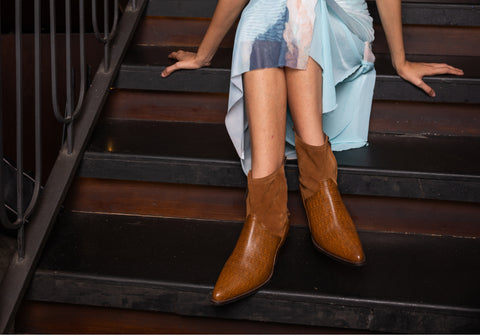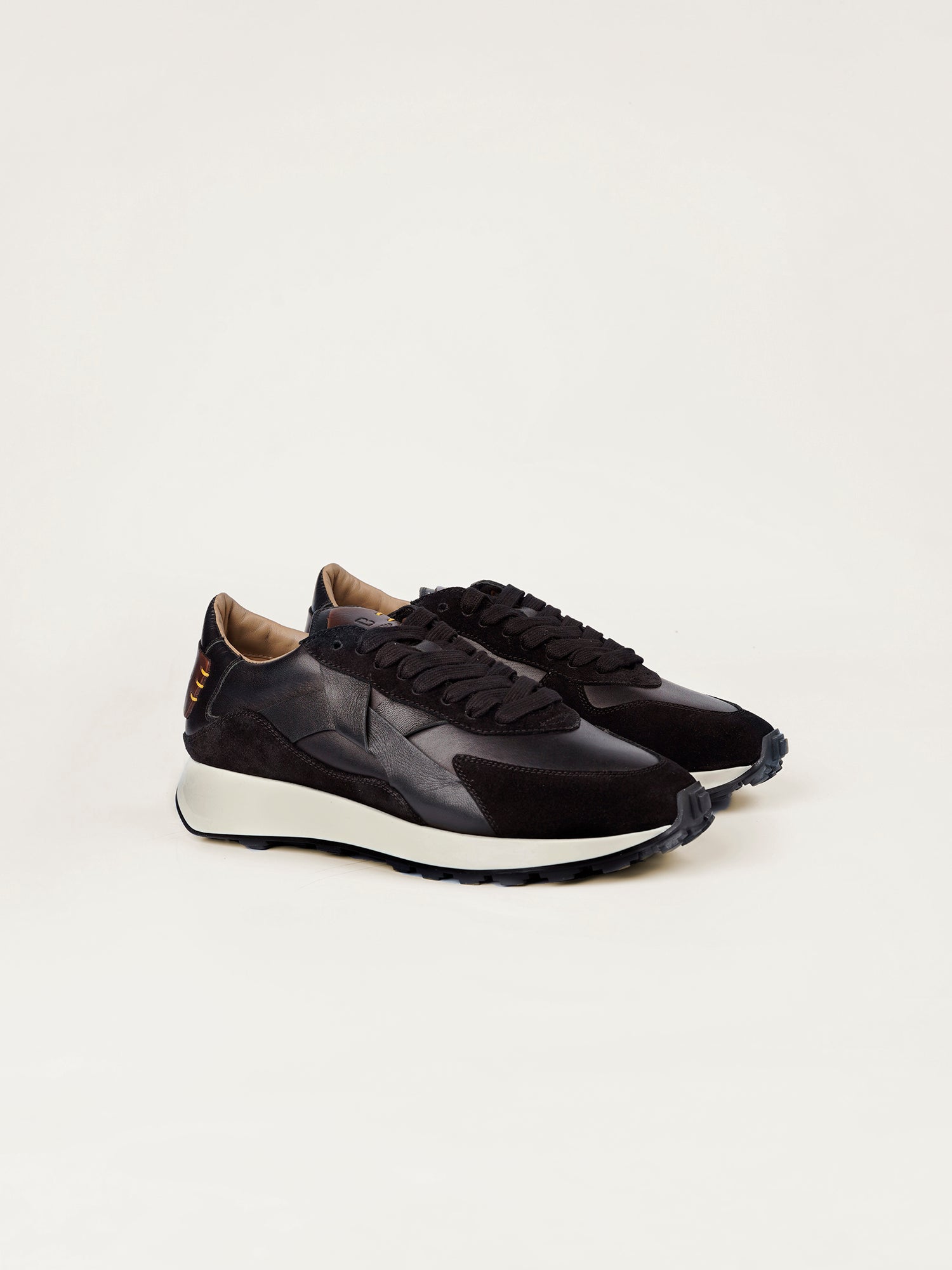Beauty is pain. You will probably never understand how true this popular phrase is until you try to wear your brand-new pair of ankle boots for the first few days. The excitement of getting new kicks suddenly dissipates with the grand homecoming of the stabbing pain in your toes. And if you thought you were only imagining things, the blisters that soon follow the soreness are all the visual evidence you need.
The good news, though, is that you can avoid pain and injury when breaking into new ankle boots. Even better, we know just how it's done and are happy to share.
So, in this article, you'll learn all you need to know about how to break in new boots painlessly and avoid blisters. Ready? Let's go!

The ROAST:
- Ankle boots will often hurt initially because your feet are still adapting to your new pair of goodies (it's called the breaking-in process)
- The good thing about the breaking-in process is that there are numerous effective tips to make it as painless as possible
- The first step to breaking in your new ankle boots like a pro is getting your footwear in the right size — they shouldn't be loose or tight
Is It Normal for Boots to Hurt At First?
Before diving into how to break in new boots without feeling anything, let's address that one question you really want to ask — is it a ME problem? Does everyone else face the same issue with new ankle boots, or is it just you?
Well, we're happy to let you know that the initial pain you feel after wearing a new boot for a while didn't begin with you. It sure won't end with you too. In fact, break-in pain and its accompanying blisters are a common struggle among many shoe lovers. We don't just hold our megaphones and announce them to the world for reasons best known to us.
New footwear often causes initial discomfort because their materials are still as stiff as they can be. Like a fresh friendship, they need some time to adjust to your foot’s shape — and vice versa. In the process of stretching the material to comfortably fit your toes and soles, your feet are on the receiving end.
So, now that you know it's normal for your boots to hurt at first, let's get into how to make the break-in process less painful.
How Do You Make Breaking in Boots Less Painful?
The truth is that there's no trick to employ that'll fast-track the time it takes to break in your new ankle boots for ladies. However, these tips will ensure that you get the most painless break-in process possible:
- Let Socks Work Its Magic
Thick socks do a lot more than keeping you warm and elevating your style. When done right, they can also help your feet ease into the breaking-in process. Simply wear them in your boots at home for a while, and take them off once you start feeling uncomfortable. Repeat this process every other day, and you'll find that your boots feel more comfortable when you wear them out without socks.
- Pay Attention to the Bend
Generally, everyone's feet bend at the ankles and toes. You should pay close attention to these two places when breaking in your new ankle boots because friction is more intense in those areas. If you can minimize the friction by using your hand to reinforce the creases that your ankles and toes form, it'll reduce your risk of pain and blisters. This also allows the booties to adjust to your foot's natural contours easily.
- Apply Little Heat
Adding a little heat from a hairdryer to your ankle boots when wearing your thick socks can also help to stretch the letter a bit. Just ensure that the heat application isn't prolonged to avoid damaging your footwear.
- Always Carry Your Plan B Along
Your new shoes for women will need some support from their older siblings, pending when they adjust completely to your feet. So, always ensure that you take your old booties along whenever you're wearing the latest additions. This ensures that you always have back-up footwear to ease your pain whenever the discomfort from your new shoes kicks in.
- Go For Quality
We cannot overemphasize the importance of prioritizing quality over quantity when shopping ankle boots. More than just durability and cost-effectiveness, boots made from quality material are more amenable to the breaking-in process.
- Freeze It
There's a fast freezer trick you can use to stretch your new women ankle boots overnight on the days you can't be patient. Fortunately, the process is easy too.
Double bag two ziplock freezer bags filled with water, ensuring that you take out all the air in them. Next, fit the bags in your boots and let them sit in the freezer till the next morning. When you remove the boots, ensure that you let the ice defrost before attempting to take them off.
This tip will relax the leather. However, be extra careful as any little mistake can cause significant water damage to your favorite booties.
- Blister Plasters to the Rescue
Breaking in your new boots requires a great deal of patience. Sometimes, however, patience is the one luxury you can't afford, and that's okay.
All you have to do when you must wear your new boots is to be proactive and protect yourself from blisters before they happen. This is where blister plasters come in.
Blister plasters can serve as extra padding for the parts of your feet that are most prone to irritation or friction. So, simply place the blister plasters on the problem areas for enhanced comfort.
- Visit A Professional
After all is said and done, you should take your ankle boots to a reputable cobbler if you don't notice any progress after a while. Your cobbler will take a good look at your shoe and proffer solutions to the problem based on your complaints. Typically, this may involve stretching specific parts of the boot, placing custom implants, or replacing the old soles.
The Don'ts of Breaking In New Ankle Booties
Just as there are effective tills for breaking in your ankle boots like a pro, there are also ill practices to avoid. They include:
- Wearing your boots too often
- Filling your ankle boots with water and drying them
- Wearing wet socks
- Spraying your boots with a mix of alcohol and water
Whenever you're in doubt, be sure to seek a professional's guidance and advice.
Does Vaseline Soften Boots?
Yes, Vaseline can be used to soften your stiff ankle boots, especially if they're made of leather. It may also be used to prevent them from cracking due to extreme dryness.
To soften your leather ankle boots with Vaseline, we advise that you apply rubbing alcohol over the surface with a small cotton pad. Do this until the leather has a visible and even shine across all surfaces.
Next, take a light layer of Vaseline and apply it over the boot's shiny surface. Add another layer if the leather can absorb more Vaseline. Then store your boot properly in a cool, dark place overnight. Your leather ankle boot should be less stiff by the next day.
To ensure that your footwear remains soft:
- Invest in premium quality leather
- Protect them from UV rays and heat
- Follow the manufacturer's instructions for caring for your footwear
- Maintain them with oil regularly
Note that you can also soften your leather boots with leather conditioner.
Should Ankle Boots be Tight or Loose?
When we talk about breaking in new ankle boots, we're assuming that your footwear is the perfect fit for your feet. In other words, the breaking-in tips above are only effective when you purchase your correct shoe size. This is because no attempt to break in your new booties will yield positive results if they're tighter than they should be. On the other hand, there'll be no need for breaking in if your footwear is loose.
So, the answer is a big NO. You should never be caught wearing ankle boots that are tight or loose.
No matter the breaking-in tips you follow, tight shoes will continue to feel uncomfortable. They'll put extra pressure on your nerves and increase your risk of numerous foot health issues. Meanwhile, loose shoes will affect your stability and predispose you to ankle sprain/fractures. So, always ensure that you go for ankle boots in the right size for your feet.
To check that your new ankle boots have a proper fit, place one finger between the footwear and your ankle. If your finger can't fit in easily, it's too tight and if more than just a finger passes through, it's an indication that your shoe is too loose.

Wrap Up
“Why do my feet hurt so bad in boots?” “How do you soften boots around your ankles?” “How do you wear ankle boots without pain?” Lucky you, these are questions you'd never get to ask again after reading this article.
More than just attending to all your concerns about breaking in new shoes, we're also making you an offer you can't refuse to your doorstep. It's the opportunity to shop for your favorite high-quality, sustainable, and trendy ankle boots at affordable prices and in the easiest way ever.
At Black Tulip, we have a variety of ankle boot options in trendy and classic colors to choose from. Our primary goal is to ensure that you have access to shoes with a perfect balance between comfort, style, and functionality. So, you can be sure of rocking your ankle boots conveniently even with the first few wears when you choose any from our collection.




















